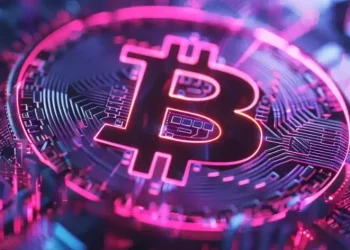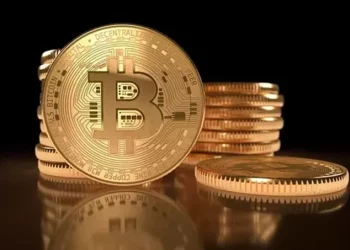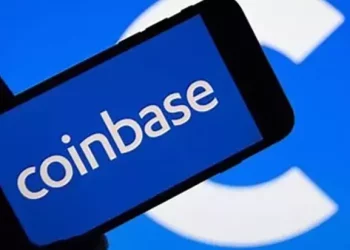In the rapidly evolving world of cryptocurrency, blockchain technology has become the backbone of the digital asset ecosystem. Among the numerous blockchain networks, Binance Chain has emerged as a significant player, attracting attention from both developers and traders alike. Binance Chain is the native blockchain of Binance, one of the world’s largest cryptocurrency exchanges. It is designed to facilitate fast, secure, and efficient transactions while supporting a variety of decentralized applications (dApps) and assets. This article will explore what Binance Chain is, its features, how it works, and its role in the broader blockchain ecosystem.
Introduction to Binance Chain
Binance Chain was created by Binance, a leading cryptocurrency exchange known for its vast array of digital asset offerings, including trading pairs, futures, and staking options. Binance originally launched Binance Chain in 2019 to serve as a high-performance blockchain platform focused on speed, scalability, and decentralization. Unlike other blockchains such as Ethereum, Binance Chain was designed with a specific purpose in mind: to improve the trading experience on the Binance exchange and support the creation of decentralized exchanges (DEXs) and tokenized assets.
Binance Chain supports the creation and transfer of digital assets and tokens, and it serves as the underlying infrastructure for Binance DEX, a decentralized exchange. Unlike traditional centralized exchanges like Binance itself, Binance DEX operates in a decentralized manner, where users retain control of their funds while still accessing efficient trading capabilities.
Key Features of Binance Chain
To fully understand the Binance Chain network, it’s important to consider its unique features that differentiate it from other blockchain networks.
1. Speed and Efficiency
One of the primary advantages of Binance Chain is its speed. The network is optimized to handle a high volume of transactions at low costs, making it an attractive option for traders and users looking for quick and cost-effective transactions. Binance Chain achieves this through its consensus mechanism, which is a variation of the traditional Proof-of-Stake (PoS) called the Tendermint consensus.
Tendermint allows Binance Chain to process transactions quickly without compromising on security or decentralization. As a result, Binance Chain can confirm transactions in a matter of seconds, which is much faster than networks like Bitcoin and Ethereum, where transaction times can be minutes or even hours.
2. Scalability
Scalability is another key feature of Binance Chain. Scalability refers to a blockchain’s ability to handle a growing number of transactions without slowing down or encountering bottlenecks. Binance Chain is designed to scale efficiently, allowing it to support millions of transactions per day. This is crucial for a blockchain designed to facilitate exchanges and decentralized finance (DeFi) applications.
3. Low Transaction Fees
Transaction fees on Binance Chain are generally much lower compared to Ethereum, especially during periods of high network congestion. Binance Chain uses its native token, Binance Coin (BNB), to pay for transaction fees. This offers two major benefits: first, users of Binance Chain can reduce their fees by holding and using BNB, and second, it adds utility to Binance Coin, which is central to the entire Binance ecosystem.
4. Native Support for Decentralized Finance (DeFi)
DeFi applications have seen explosive growth in recent years, and Binance Chain is no exception. Binance Chain supports the development of decentralized applications (dApps) that allow users to engage in activities such as lending, borrowing, staking, and yield farming without relying on centralized intermediaries. The Binance Chain ecosystem is home to several DeFi protocols, including those for decentralized exchanges (DEXs) and decentralized lending platforms.
5. Binance Coin (BNB) and Its Utility
Binance Coin (BNB) plays a central role in the Binance Chain ecosystem. Initially launched as an ERC-20 token on the Ethereum blockchain, BNB was later migrated to Binance Chain to become its native cryptocurrency. BNB is used to pay for transaction fees on Binance Chain, participate in token sales on Binance Launchpad, and in various DeFi applications within the Binance ecosystem. The utility of BNB continues to expand as Binance Chain grows and new applications emerge.
6. Interoperability with Binance Smart Chain
While Binance Chain is the primary blockchain for Binance’s exchange-focused operations, it is closely linked to Binance Smart Chain (BSC), which was launched in 2020. Binance Smart Chain is a parallel blockchain that is designed to support decentralized applications, smart contracts, and token creation.
While Binance Chain is optimized for trading and the creation of digital assets, Binance Smart Chain is designed for more complex decentralized applications (dApps), particularly in the DeFi space. Binance Smart Chain uses a similar Proof-of-Stake consensus mechanism to Binance Chain but allows for smart contract functionality, which is essential for more sophisticated decentralized applications.
By creating Binance Smart Chain alongside Binance Chain, Binance offers a highly interoperable ecosystem that allows assets to seamlessly move between the two chains. This interoperability is especially important for users who wish to leverage the DeFi features on Binance Smart Chain while benefiting from the speed and efficiency of Binance Chain for trading.
How Binance Chain Works
At its core, Binance Chain is designed to facilitate the fast and efficient transfer of assets. The network uses a consensus mechanism called Tendermint BFT (Byzantine Fault Tolerant), which is based on Proof-of-Stake (PoS). In this model, validators play an essential role in securing the network and verifying transactions.
1. Validators and Consensus Mechanism
Validators are responsible for confirming transactions and maintaining the integrity of the blockchain. They do so by validating blocks of transactions and ensuring that each transaction follows the rules of the network. Binance Chain employs a Delegated Proof-of-Stake (DPoS) mechanism, meaning that users vote for validators who will secure the network. This system allows Binance Chain to maintain decentralization while ensuring fast transaction processing.
2. Transaction Flow
When a user initiates a transaction on Binance Chain, the transaction is broadcast to the network of validators. These validators work together to confirm the transaction and add it to a new block. Once the block is added to the chain, the transaction is complete, and the assets involved in the transaction are transferred accordingly.
This process is highly efficient and allows Binance Chain to handle thousands of transactions per second, ensuring that users can trade assets without significant delays.
3. Binance Coin (BNB) as Gas
On Binance Chain, users pay transaction fees in BNB, the native cryptocurrency of the Binance ecosystem. The use of BNB as gas (the fee required to execute a transaction) adds value to the coin and incentivizes its use across the Binance platform. Since Binance Coin is integral to the functioning of Binance Chain, it helps to ensure that the network remains fast and low-cost for users.
Binance Chain and Decentralized Applications (dApps)
Binance Chain provides a robust foundation for decentralized applications (dApps) within its ecosystem. These dApps cover a wide range of use cases, with a strong focus on decentralized finance (DeFi), token issuance, and non-fungible tokens (NFTs). Binance DEX, the decentralized exchange built on Binance Chain, is one of the most well-known dApps within the ecosystem. It allows users to trade a wide variety of cryptocurrencies in a decentralized manner, without the need for a central authority or intermediary.
The Binance Chain ecosystem also supports the creation of new tokens through the BEP-2 standard. This standard allows developers to issue their own tokens on the Binance Chain, enabling the creation of a variety of tokenized assets, such as utility tokens, security tokens, and even tokenized commodities.
Benefits of Binance Chain
Speed and Low Fees: Binance Chain’s high transaction throughput and low transaction fees make it ideal for high-frequency trading and decentralized applications.
Security: The network’s use of Tendermint’s Byzantine Fault Tolerant consensus mechanism ensures that Binance Chain is secure and resistant to attacks.
Flexibility: The ability to create and issue custom tokens on Binance Chain allows for a wide range of use cases, from DeFi applications to NFTs.
Interoperability: Binance Chain’s integration with Binance Smart Chain provides a seamless connection between trading and decentralized applications.
Challenges and Criticisms
Despite its advantages, Binance Chain has faced criticisms, particularly regarding its level of decentralization. While the Delegated Proof-of-Stake mechanism allows for efficient transaction processing, it does so by giving more control to a smaller group of validators. Critics argue that this could make the network more centralized compared to other blockchains that use Proof-of-Work (PoW) or fully decentralized PoS systems.
Additionally, as with any blockchain, Binance Chain is still subject to market volatility and regulatory scrutiny. As cryptocurrency regulations evolve worldwide, the future of Binance Chain may depend on how well it can navigate these challenges.
Conclusion
Binance Chain is a powerful blockchain network that has significantly influenced the cryptocurrency ecosystem. Its high speed, low transaction fees, and focus on decentralized exchanges and applications have made it a go-to platform for many users and developers. By creating Binance Chain alongside Binance Smart Chain, Binance has built an interconnected ecosystem that offers unparalleled flexibility and scalability for decentralized finance and beyond. However, like all blockchain projects, Binance Chain faces challenges, particularly in terms of decentralization and regulatory concerns. Regardless, it remains a prominent player in the world of digital assets and will likely continue to play a key role in the future of decentralized finance.
Whether you are a trader, developer, or crypto enthusiast, understanding Binance Chain’s role in the broader blockchain ecosystem is crucial for navigating the fast-moving world of digital assets.
Related topics:

















